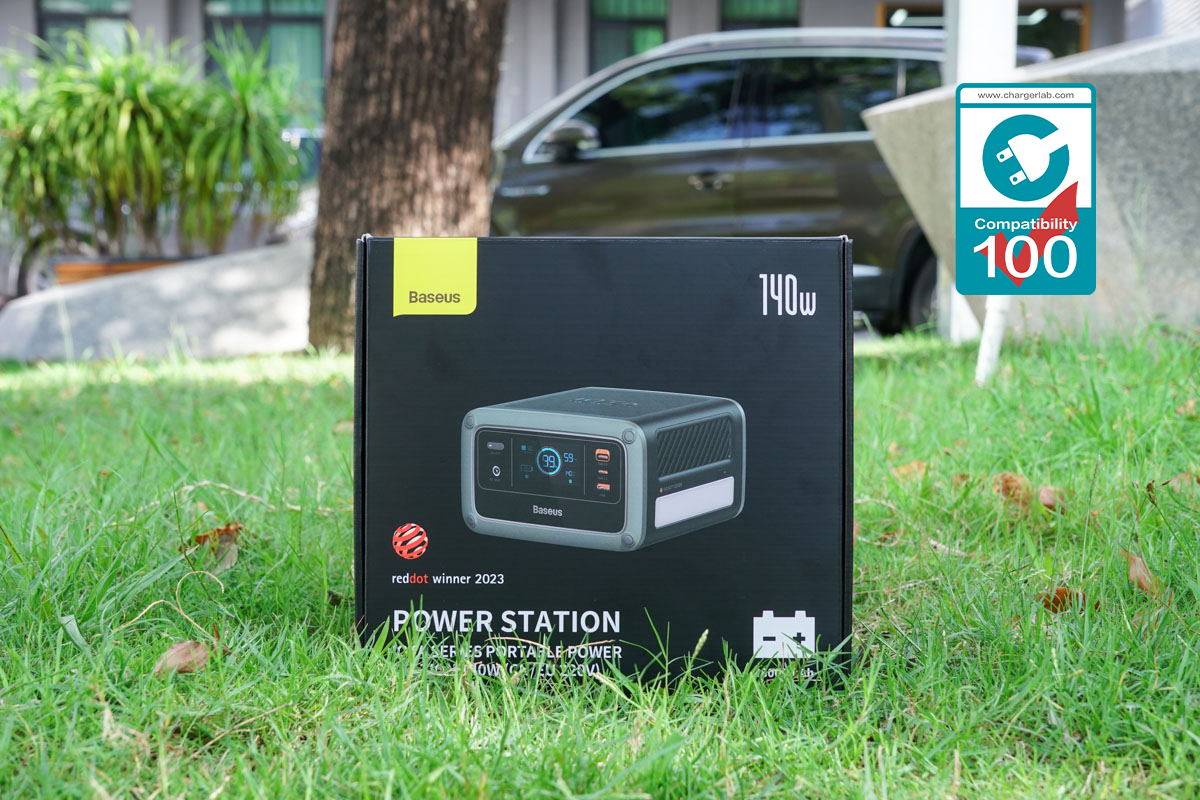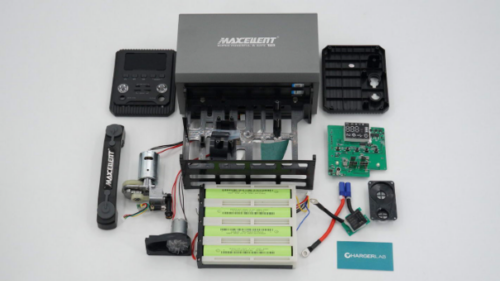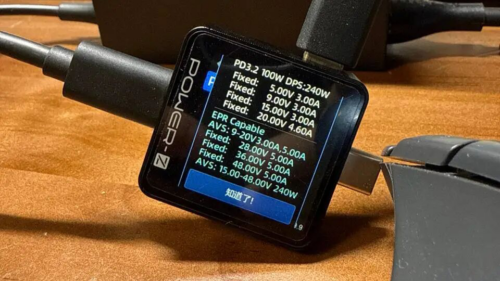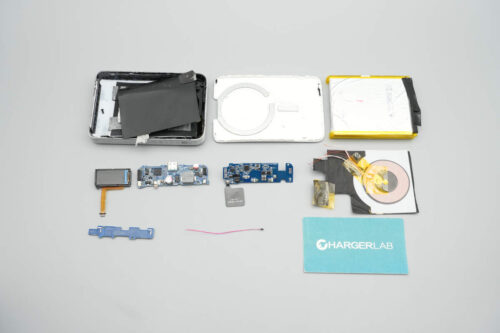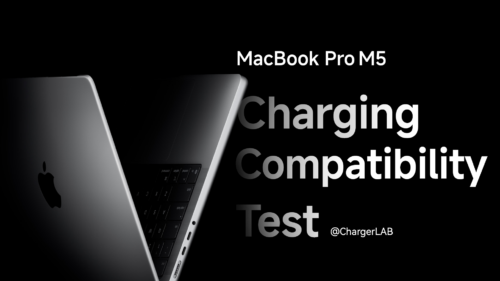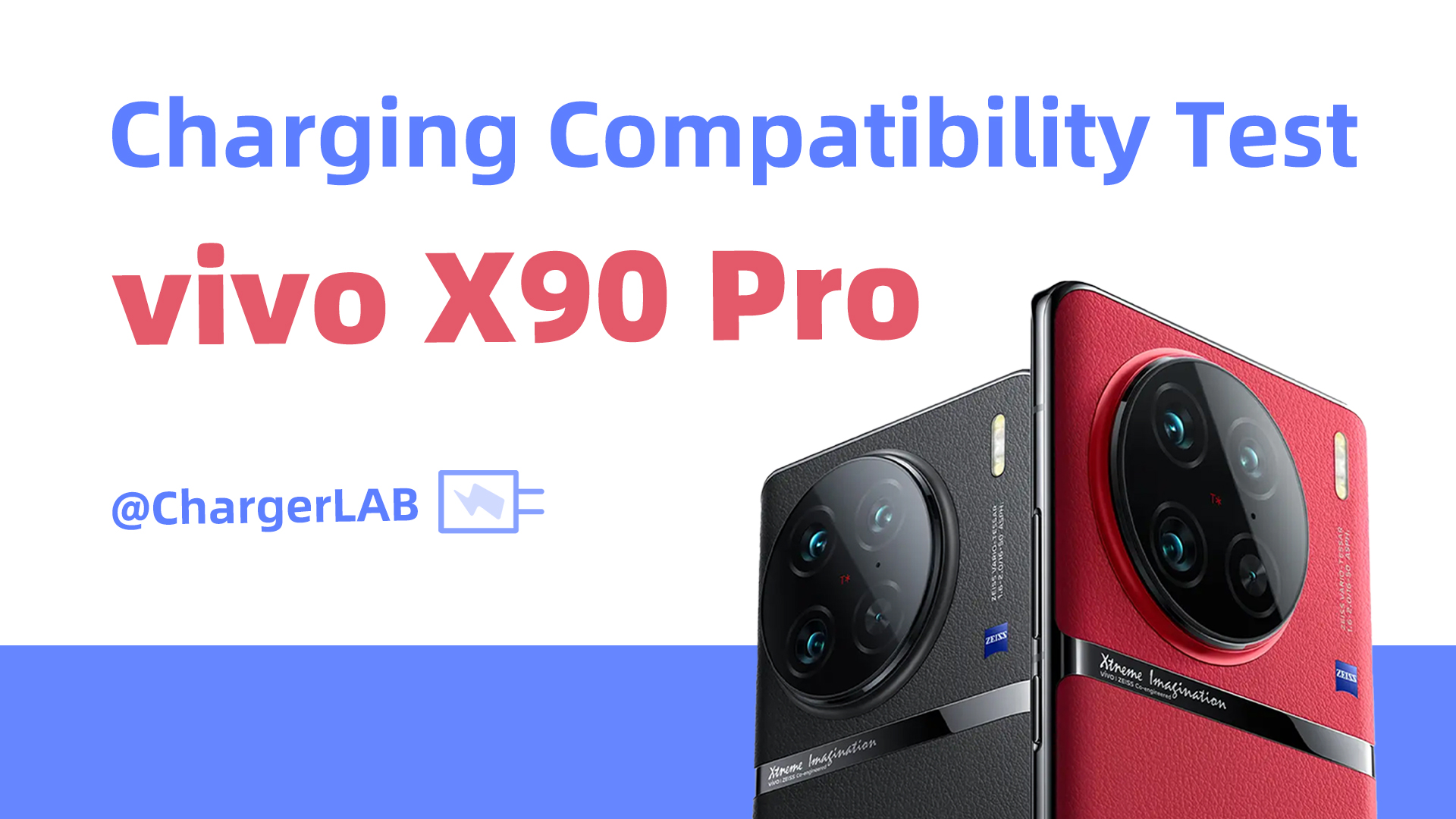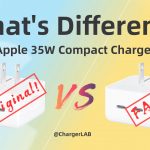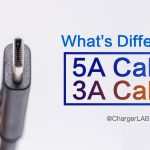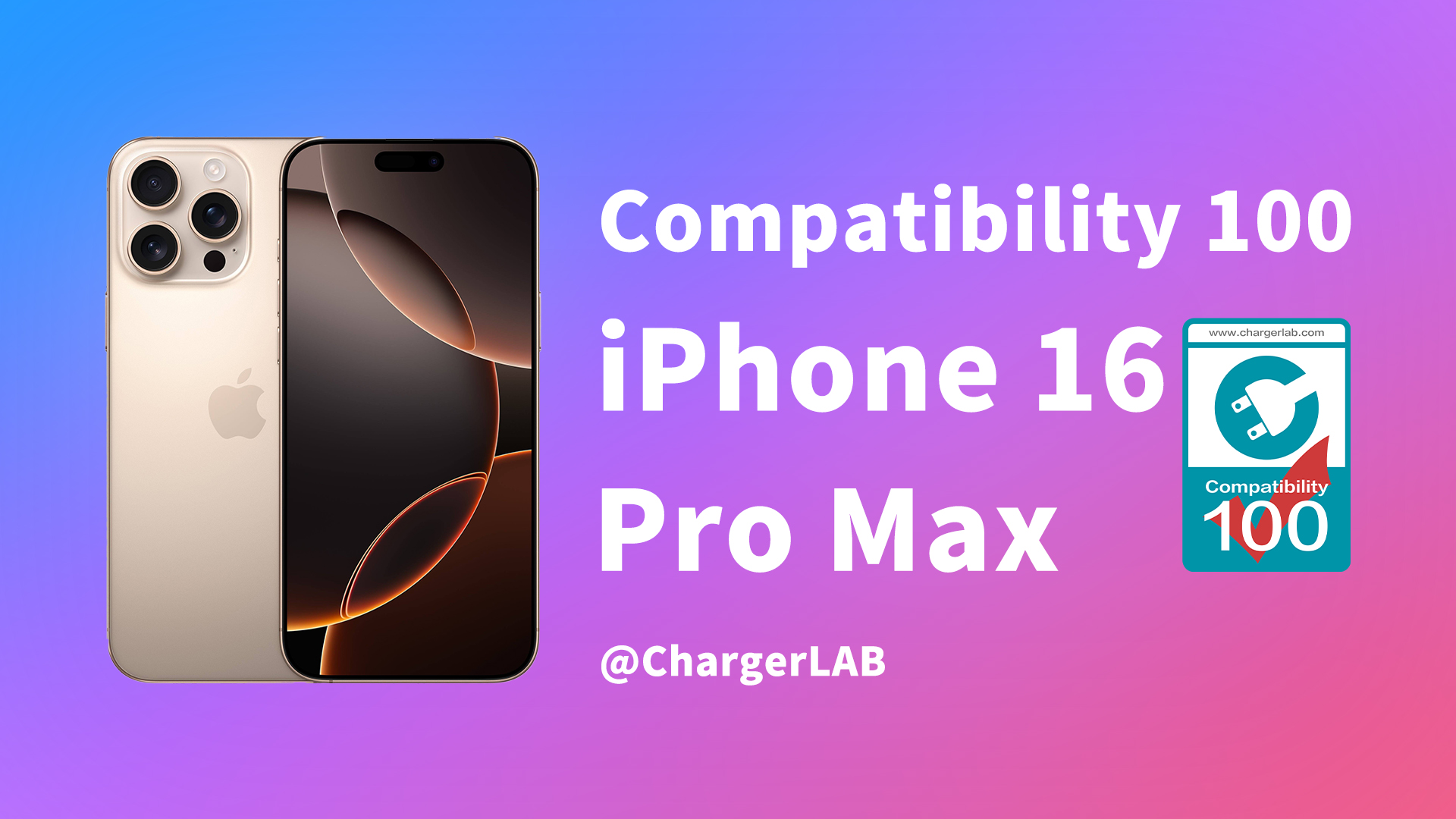Introduction
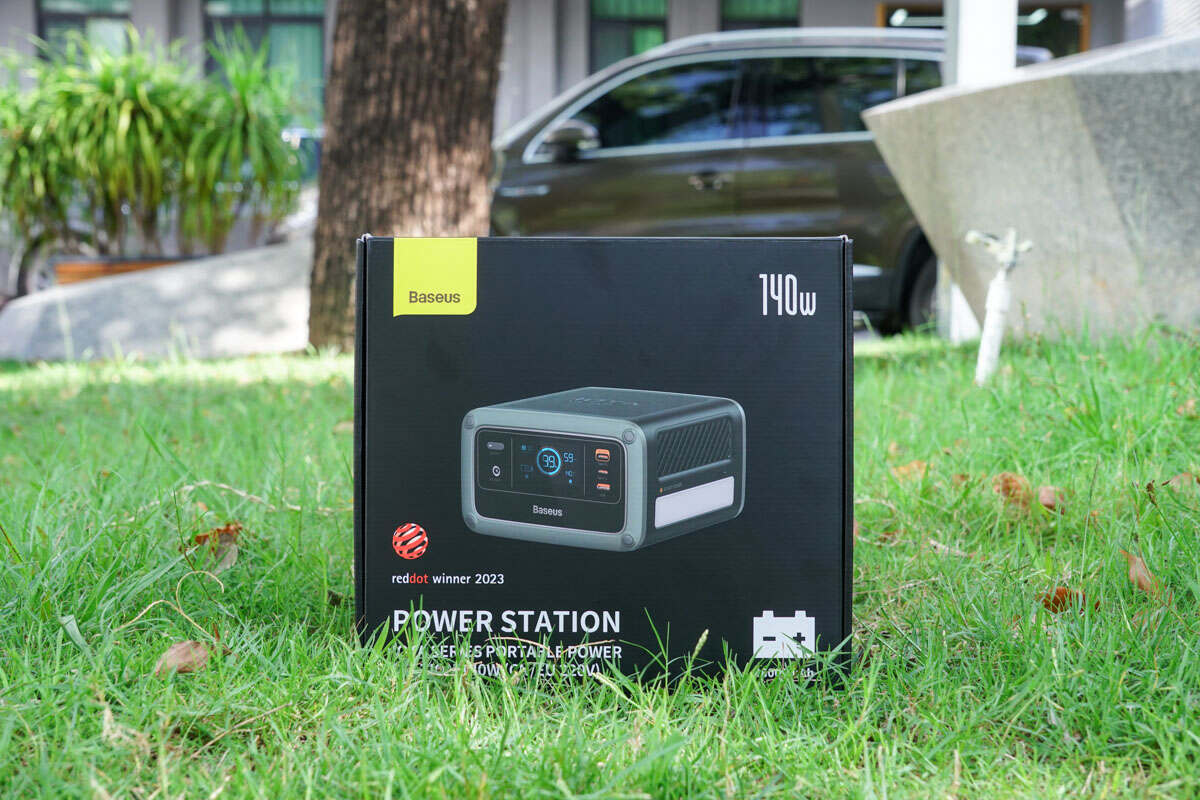
Although ChargerLAB has conducted reviews and teardowns of various electronic accessories from Baseus, we have yet to explore their portable power stations. Recently, we acquired the Baseus 140W IOTA Portable Power Station and conducted a video-based compatibility test with 100 devices. Now, we will present an article version with more detailed tables and analyses to provide a comprehensive understanding of this portable power station's charging compatibility.
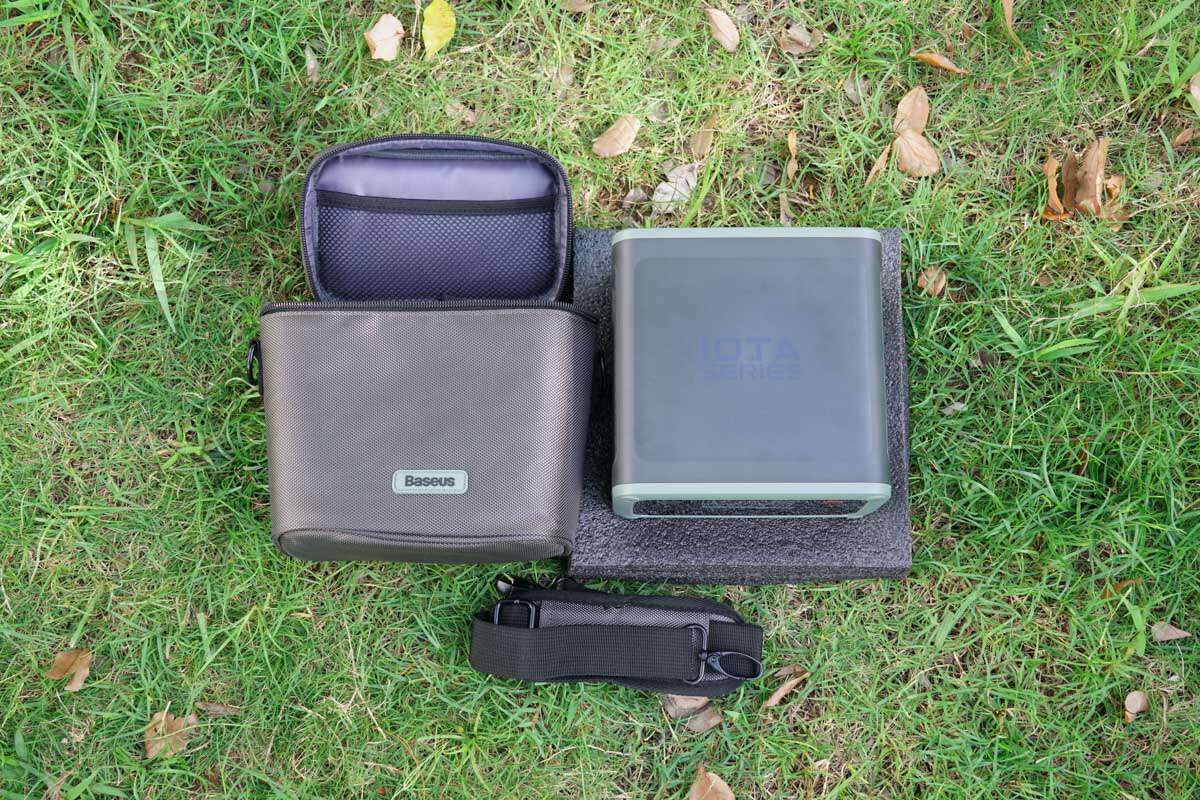
The Baseus 140W IOTA Portable Power Station features a UL-certified lithium iron phosphate battery, equipped with two USB-C ports, one USB-A port, two AC outlets, and one DC port, capable of powering up to 6 devices simultaneously. Additionally, it supports the latest PD3.1 protocol. Next, let's delve into the charging compatibility of this portable power station.
Charging Compatibility Test
ChargerLAB will select 100 devices, including smartphones, game consoles, wearable devices, tablets, and laptops, to conduct compatibility tests. The tests simulate various charging scenarios that users encounter in their daily lives, providing insights into the best charging methods.
Mobile Phones
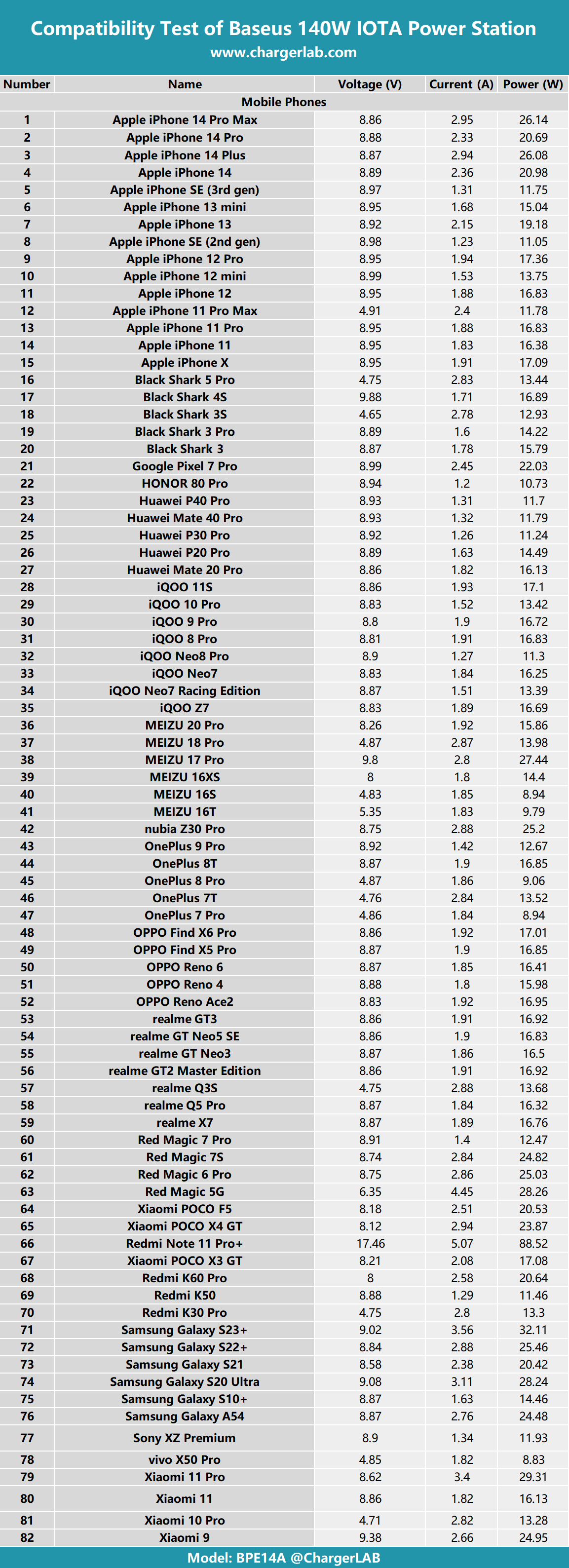
Combining the test data into a chart, a total of 77 mobile phones were tested, and it is evident that most models trigger a 9V voltage value, with currents fluctuating between 2-3A.
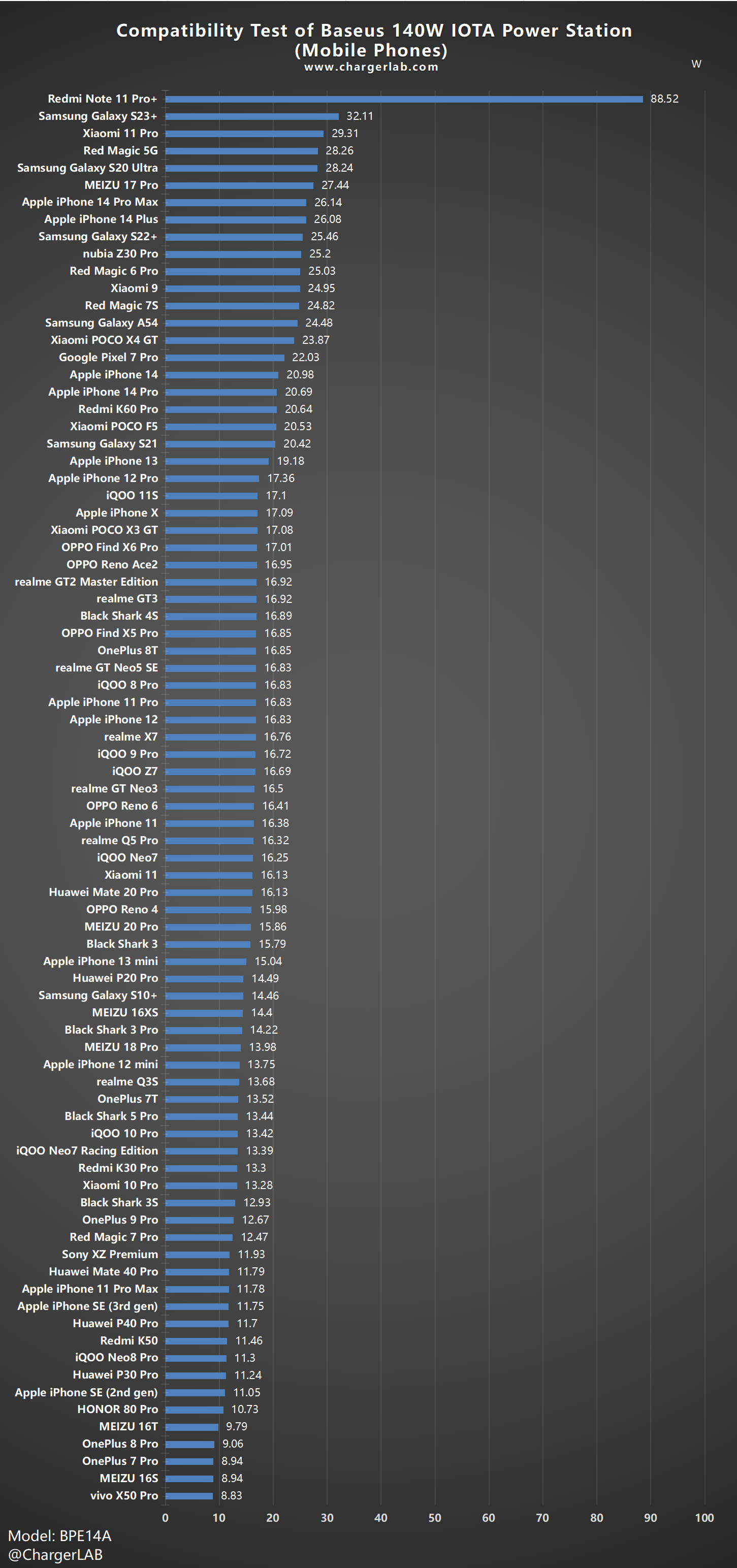
Represented in a bar graph, the Redmi Note 11 Pro+ exhibits the highest charging power of 88.52W, far surpassing the second-place Samsung Galaxy S23+'s 32.11W, showcasing exceptional performance. Samsung, Apple, and most Xiaomi devices achieve charging powers of 20W or above, while the majority of other devices fall within the 17W, 14W, and 11W ranges. No compatibility issues were found except for a few older models with lower charging power.
You can purchase some of the models on Amazon US below:
Google Pixel 7 Pro: https://amzn.to/43LBWpi
Huawei Mate 20 Pro: https://amzn.to/464Q5PZ
HUAWEI Mate 40 Pro: https://amzn.to/3p4DQCp
Huawei P20 Pro: https://amzn.to/44lNu2D
Huawei P30 Pro: https://amzn.to/444UIrm
Huawei P40 Pro: https://amzn.to/464Kppd
iPhone 12 Mini: https://amzn.to/3NvTe40
iPhone 13: https://amzn.to/42Lb6MP
OnePlus 7 Pro: https://amzn.to/43O61Vd
OnePlus 7T: https://amzn.to/3XdHeaQ
OnePlus 8 Pro: https://amzn.to/3N3uZso
OnePlus 8T: https://amzn.to/3N7Cgrr
OnePlus 9 Pro: https://amzn.to/43K5bc1
realme GT Neo 3: https://amzn.to/444Rjsu
Xiao Poco F4 GT: https://amzn.to/442X8qt
Xiaomi Poco X3 GT: https://amzn.to/444RDaG
Xiaomi Poco X4 GT: https://amzn.to/3p01vnz
Xiaomi Poco F5: https://amzn.to/3PfPDbu
Redmi Note 11 Pro+: https://amzn.to/3XOqcQM
Samsung Galaxy S22+: https://amzn.to/3Ji4YVv
Samsung Galaxy S23+: https://amzn.to/3qPkhhV
Samsung Galaxy A54: https://amzn.to/3CDPYx7
Game Consoles & Wearable Devices
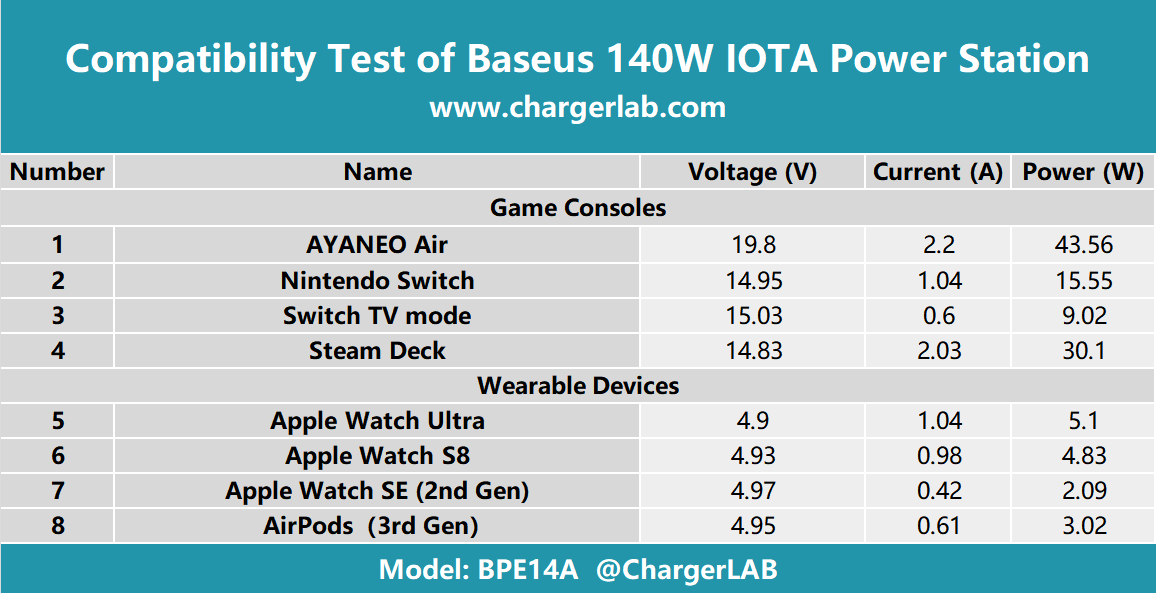
Next, let's look at the performance of game consoles and wearable devices. All tested devices trigger the normal voltage value, with USB-C ports capable of enabling TV mode for the Nintendo Switch.
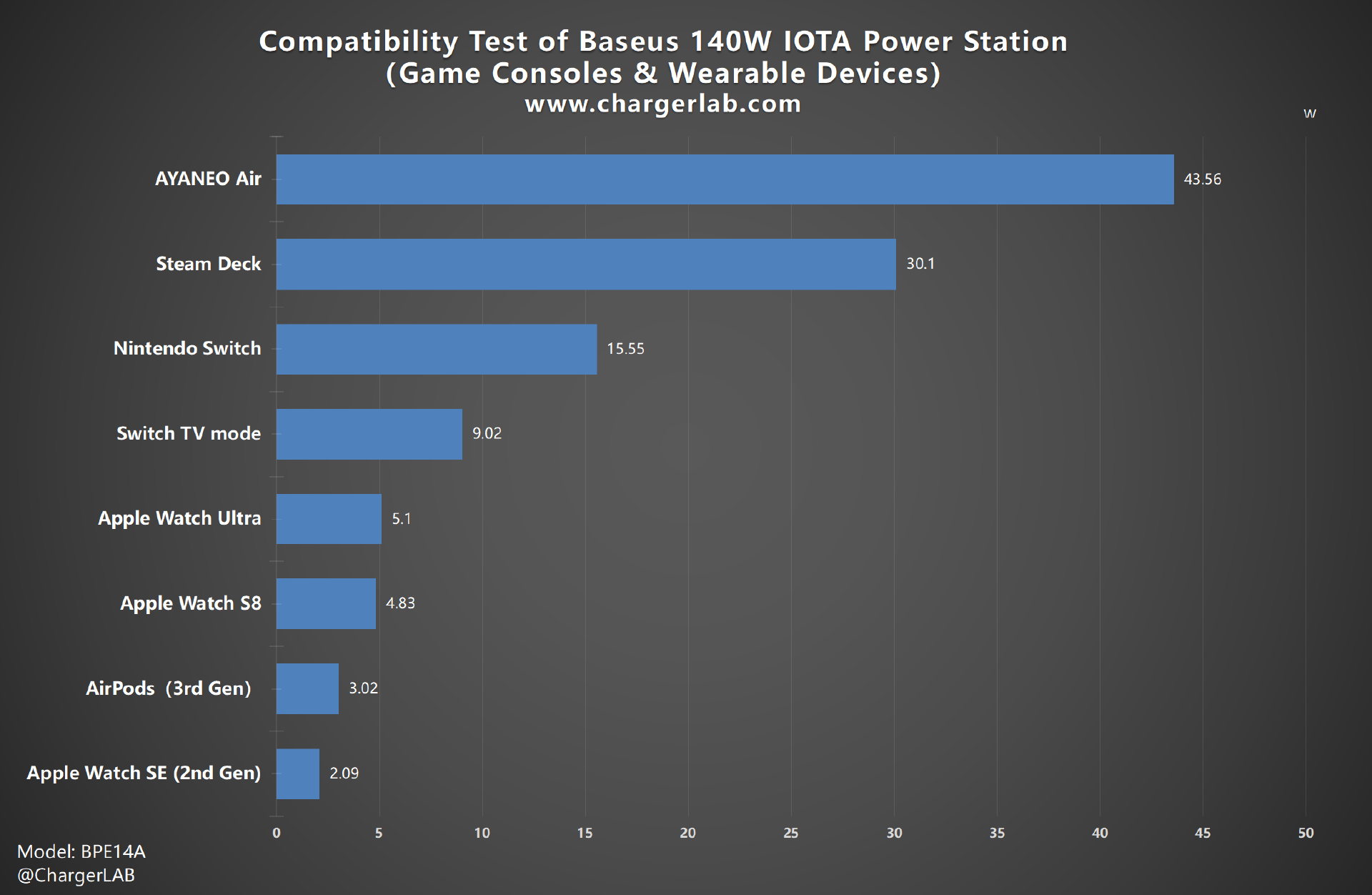
Presented in a bar graph again, the AYANEO Air achieves a charging power of 43.56W, followed closely by the Steam Deck at 30.1W. The Nintendo Switch records 15.55W, while TV mode operates within the normal power range. As for wearable devices, their charging power remains relatively low due to their specifications but still falls within the normal range.
You can purchase some of the models on Amazon US below:
Nintendo Switch: https://amzn.to/469NKmY
Apple Watch Ultra: https://amzn.to/3FsoehY
Apple Watch S8: https://amzn.to/3gOCWFA
Apple Watch SE: https://amzn.to/3SOnLcC
AirPods (3rd Gen): https://amzn.to/3Jgrxd0
Tablets
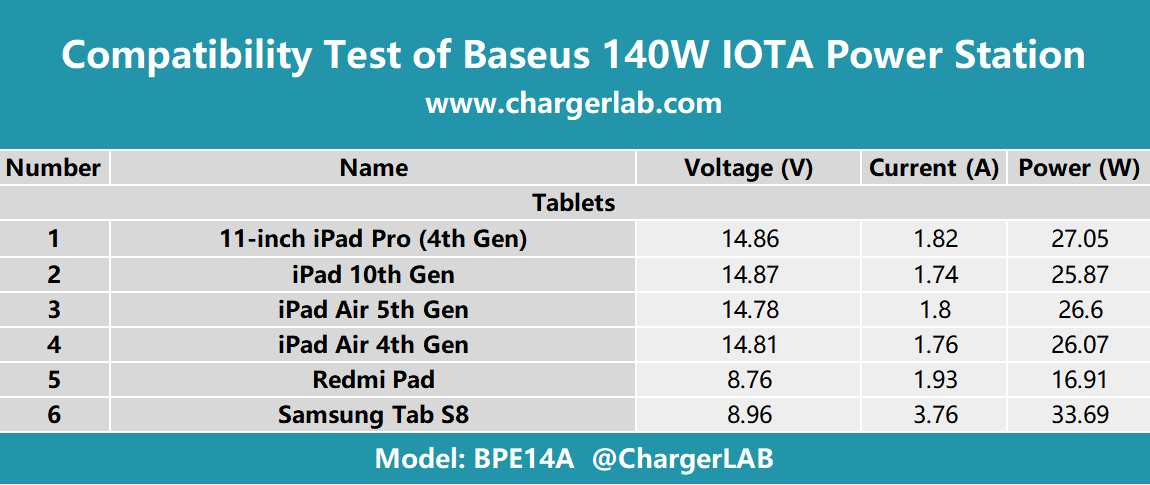
Moving on to tablets, four tested devices trigger a 15V voltage value, with currents ranging from 1-4A.
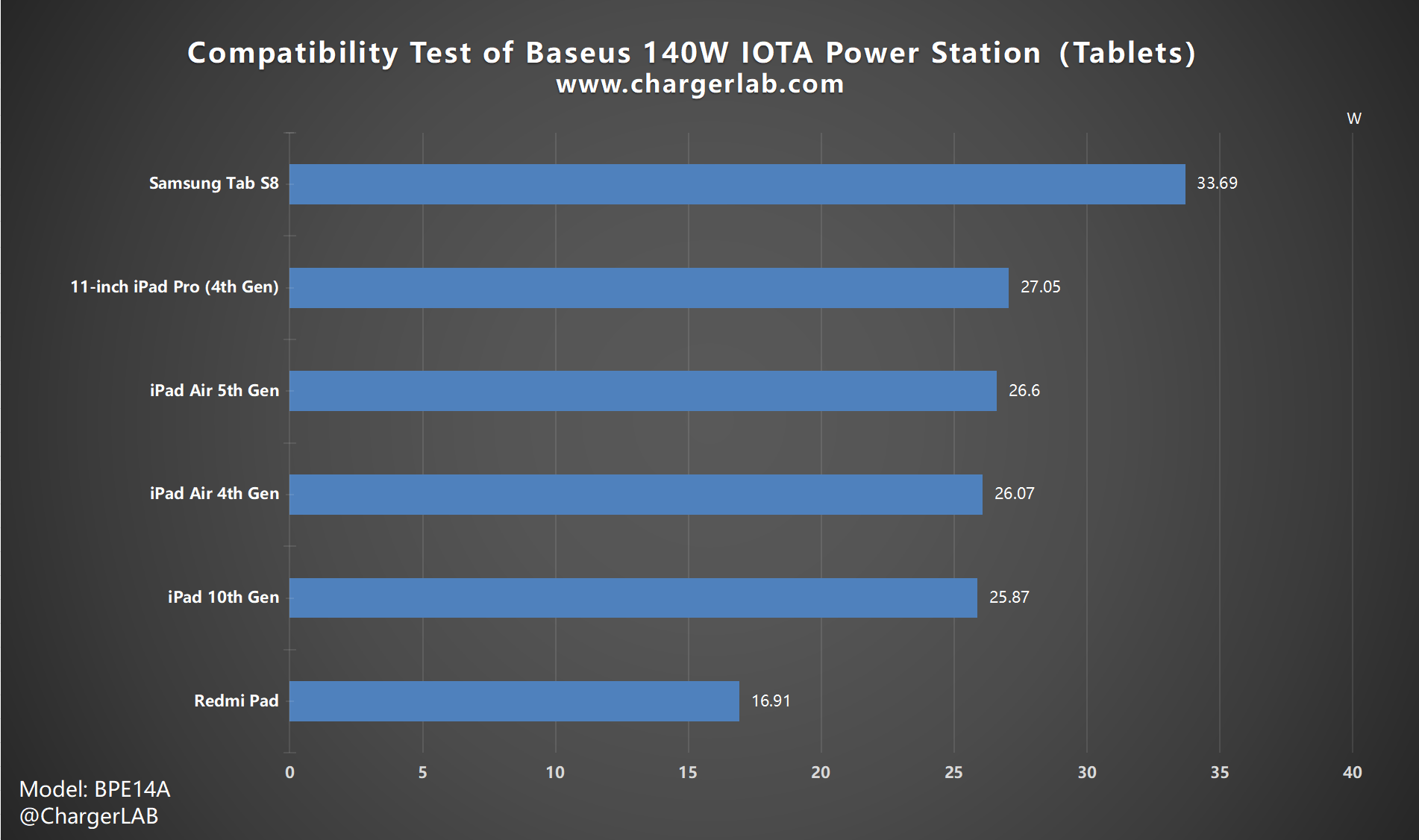
Presented in a bar graph, the performance is quite balanced, with the Samsung Tab S8 reaching the highest charging power of 33.69W and the Redimi Pad recording the lowest at 16.91W.
You can purchase some of the models on Amazon US below:
iPad Air 5th Gen: https://amzn.to/3CxSWTT
11-inch iPad Pro (4th Gen): https://amzn.to/3NzBYLs
iPad 10th Gen: https://amzn.to/469Od8I
Redmi Pad: https://amzn.to/3PgQk4l
Samsung Tab S8: https://amzn.to/3qLEuVO
Laptops
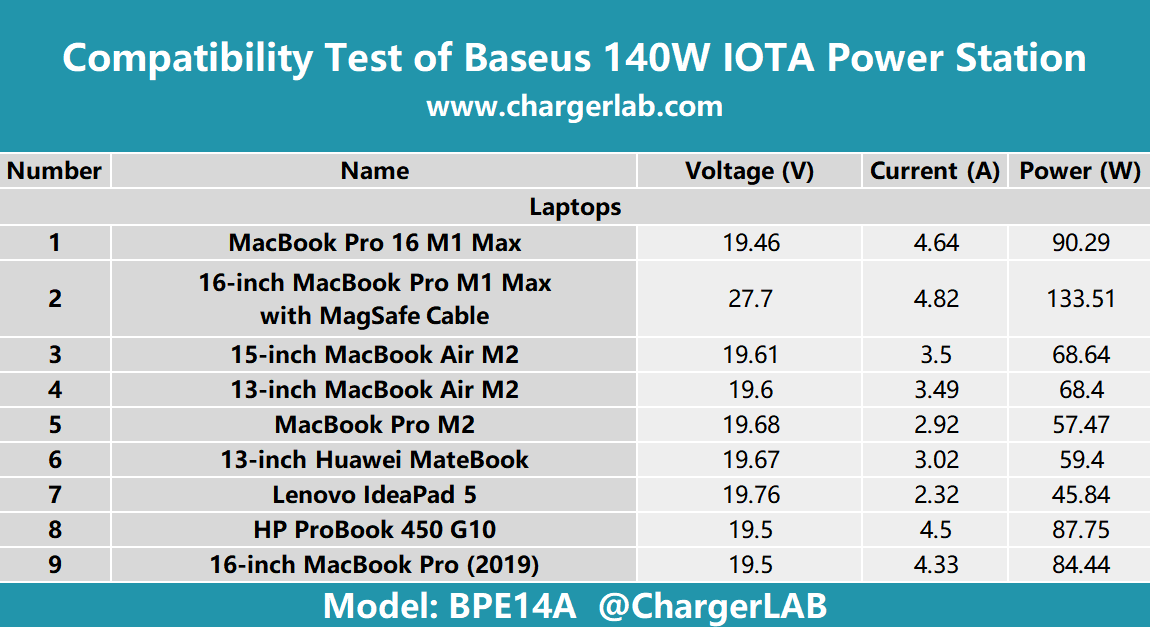
Lastly, let's assess the performance of laptops. The test data for nine models all triggered the 20V voltage value, with the 16-inch MacBook Pro M1 Max paired with a MagSafe cable achieving a high voltage of 27V.
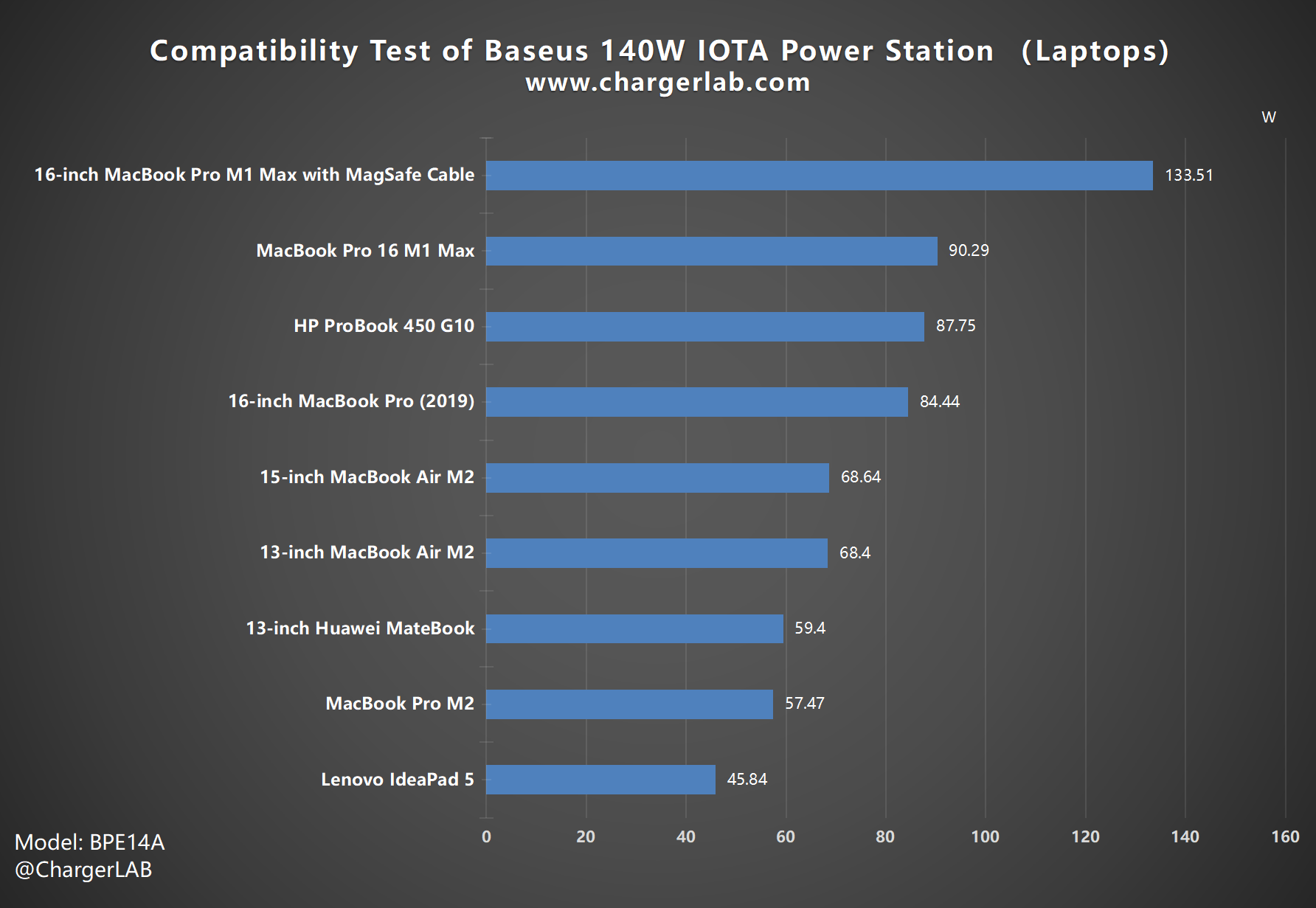
Displayed in a bar graph, the 16-inch MacBook Pro M1 Max with MagSafe cable outperforms other models, reaching an impressive 133.51W, almost reaching the power station's limit. When charged via USB-C, the power drops to 90.29W. Apart from the Lenovo IdeaPad 5, the rest of the devices fall into three charging power ranges of 80W, 60W, and 50W.
You can purchase some of the models on Amazon US below:
13-inch MacBook Pro M2: https://amzn.to/3NeNXN1
16-inch MacBook Pro M1 Max: https://amzn.to/43K6Q1f
13-inch MacBook Air M2: https://amzn.to/3NedwO4
HP ProBook 450 G10: https://amzn.to/43HeQjK
Summary of ChargerLAB
In conclusion, the Baseus 140W IOTA Portable Power Station exhibits commendable charging compatibility. The Redmi Note 11 Pro+ achieves a remarkable charging power of 88.52W, while most other smartphones reach 17W and above. Game consoles and wearable devices all fall within the normal charging range, and the USB-C port enables TV mode for the Nintendo Switch. Tablets and laptops also demonstrate excellent charging compatibility, with the 16-inch MacBook Pro M1 Max paired with a MagSafe cable nearly reaching the upper limit of the power station's USB-C1 port. After testing with 100 devices, no compatibility issues were found, validating its success in the ChargerLAB Compatibility 100 Test.
Below is the compatibility 100 test report issued by ChargerLAB.
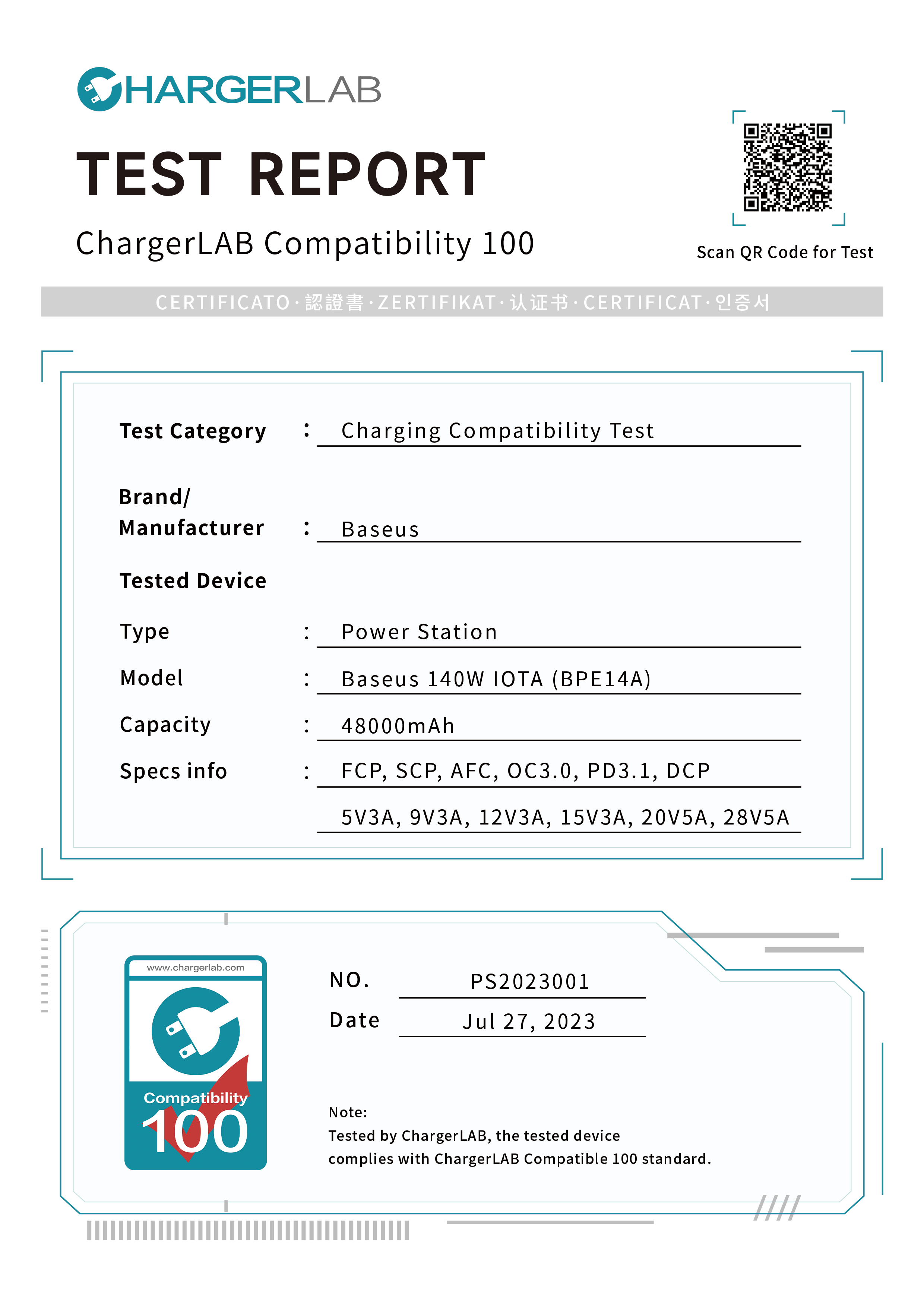
Related Articles:
1. Up to 2400W丨 Baseus Launched 600W Portable Power Station with Digital Display (Parallel Operation)
2. UGREEN 200W Portable Solar Panel: The Reliable Power Source for Outdoor Adventures
3. EcoFlow Launched River Max Plus Portable Power Station Limited Edition

